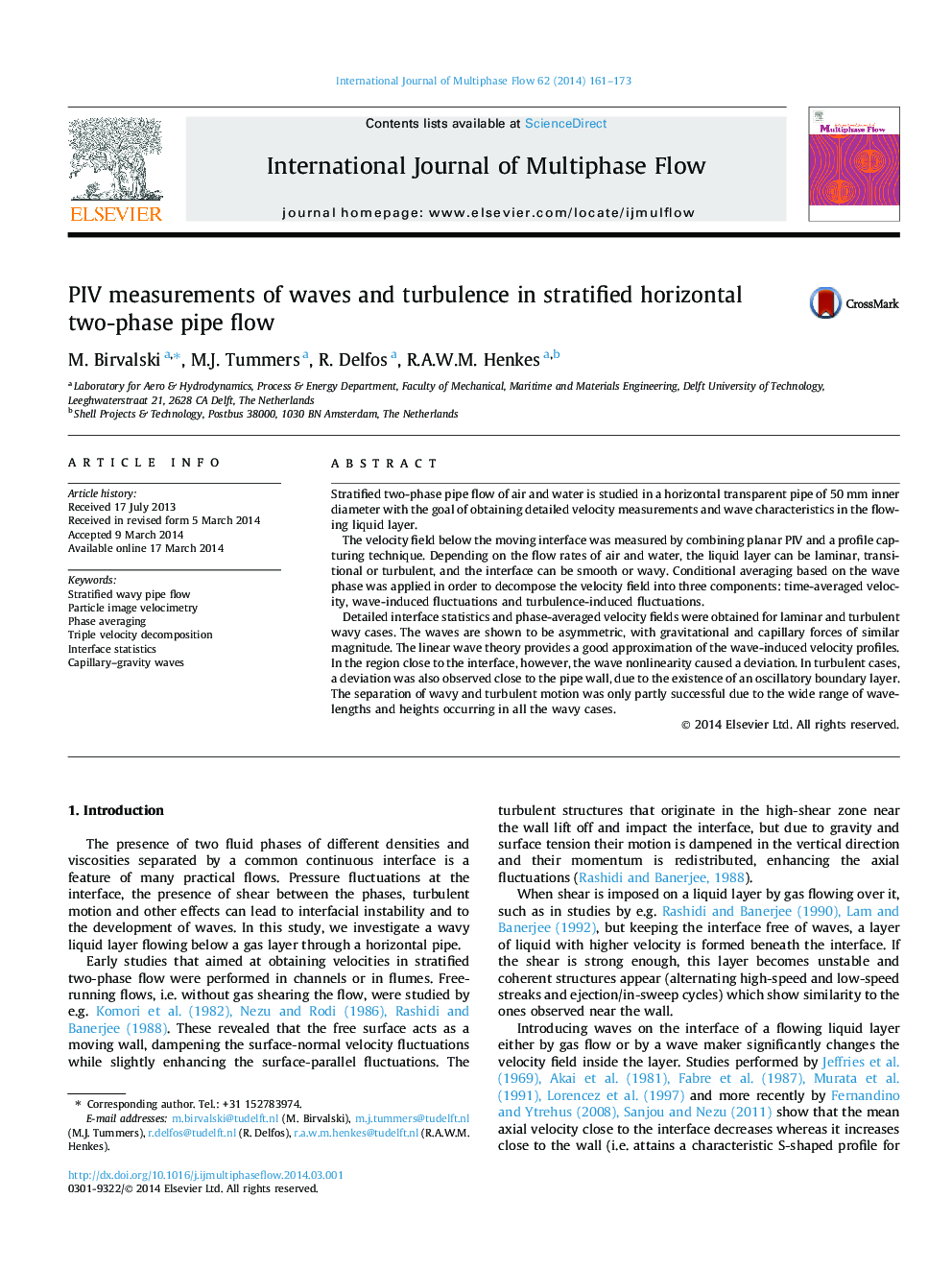| Article ID | Journal | Published Year | Pages | File Type |
|---|---|---|---|---|
| 667213 | International Journal of Multiphase Flow | 2014 | 13 Pages |
•Velocity fields are measured in stratified flows from the wall to the interface.•Smooth stratified cases follow the laws established for single-phase pipe flows.•Detailed interface statistics show waves belong to the capillary–gravity type.•Comparison with linear wave theory is good; deviation is due to wave asymmetry.•Wave-induced velocity profiles show an effect of the oscillatory boundary layer.
Stratified two-phase pipe flow of air and water is studied in a horizontal transparent pipe of 50 mm inner diameter with the goal of obtaining detailed velocity measurements and wave characteristics in the flowing liquid layer.The velocity field below the moving interface was measured by combining planar PIV and a profile capturing technique. Depending on the flow rates of air and water, the liquid layer can be laminar, transitional or turbulent, and the interface can be smooth or wavy. Conditional averaging based on the wave phase was applied in order to decompose the velocity field into three components: time-averaged velocity, wave-induced fluctuations and turbulence-induced fluctuations.Detailed interface statistics and phase-averaged velocity fields were obtained for laminar and turbulent wavy cases. The waves are shown to be asymmetric, with gravitational and capillary forces of similar magnitude. The linear wave theory provides a good approximation of the wave-induced velocity profiles. In the region close to the interface, however, the wave nonlinearity caused a deviation. In turbulent cases, a deviation was also observed close to the pipe wall, due to the existence of an oscillatory boundary layer. The separation of wavy and turbulent motion was only partly successful due to the wide range of wavelengths and heights occurring in all the wavy cases.
